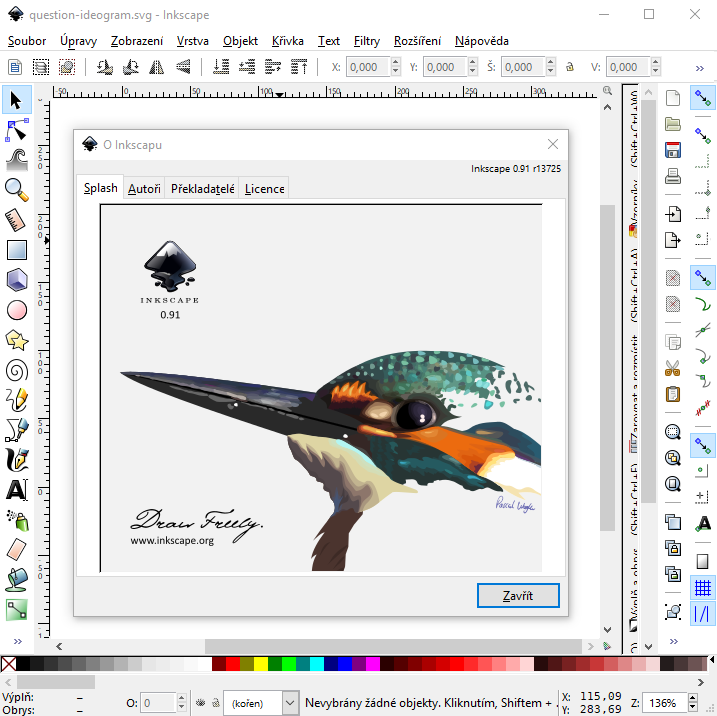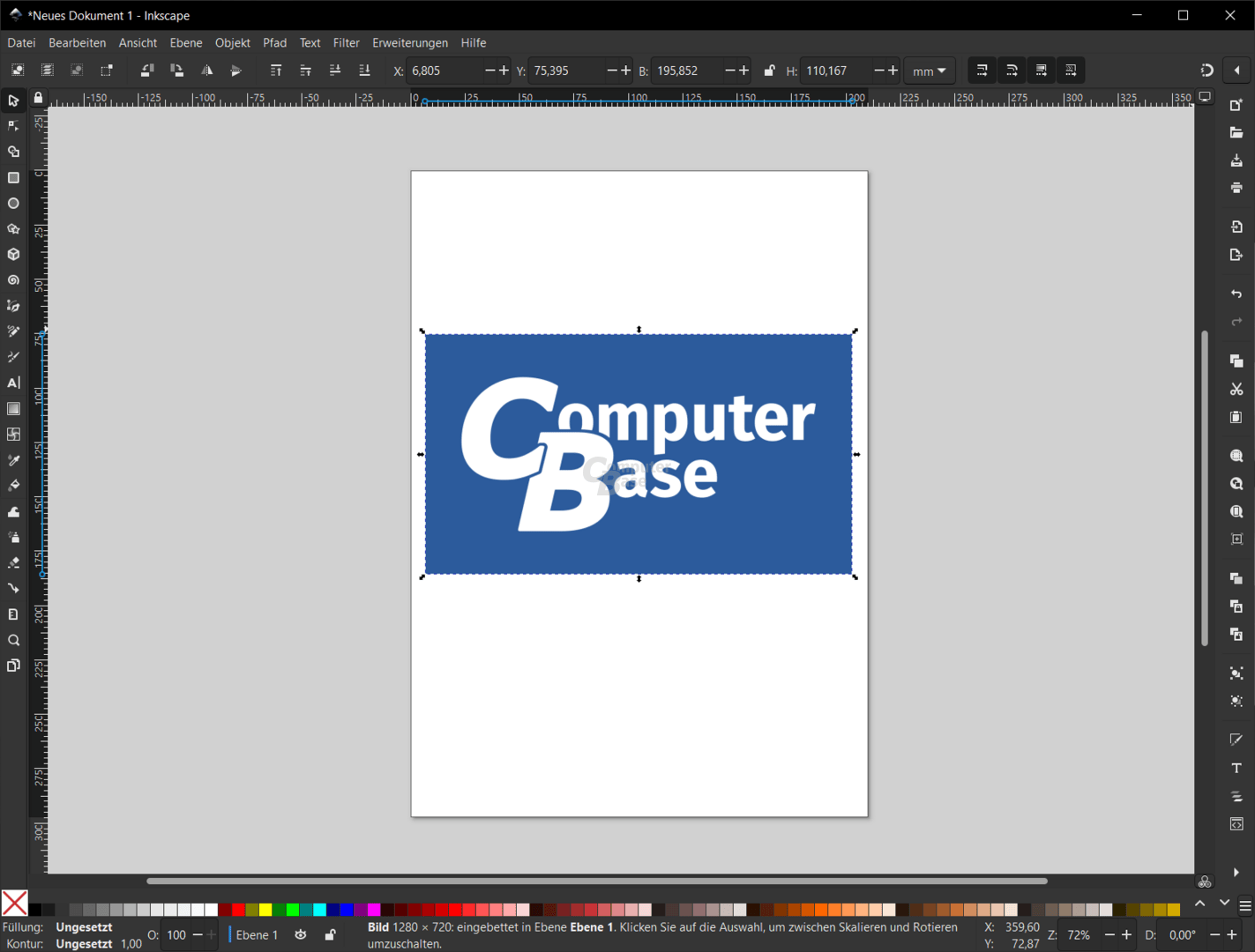

- Converting jpeg to vector inkscape how to#
- Converting jpeg to vector inkscape full version#
- Converting jpeg to vector inkscape pdf#
- Converting jpeg to vector inkscape trial#
Converting jpeg to vector inkscape pdf#
Even though PDF is the most compatible format and you probably have an app that opens this file.Īnother well used vector formats on the web is SVG (Scalable Vector Graphic). However, PDF files are not intended for editing, as you have very few options to change PDF files. PDF (Portable Document Format) might be commonly used for transfer and printing, but it is not exclusively vector format as it may also contain raster files. On the other hand, AI (Adobe Illustrator Artwork) is excellent for creating logos and has support for transparency and many editing possibilities in Adobe Illustrator. While EPS (Encapsulated PostScript) format is most used for printing, it doesn’t support transparency. With vector formats, you can create logos, web buttons, icons, and other vector art. Avoid editing and re-saving pictures in this format because that will also negatively affect their quality. But if you have to resize them, only scale down your photos to avoid quality degradation. Also, for high-resolution images, you can use JPG. As one of the most popular image formats, it is well supported by most image processing apps, web, social media networks, operating systems, and devices capable of image viewing in general. When to use a JPG file?Įven though JPG image is a raster image format, you can use it for various purposes. That is why vector formats are great for printing logos, whether they be small as an icon or on a billboard. Raster formats, on the other hand, will get pixelated when enlarged. Each format has its purpose, but what makes vector formats superior is the ability to resize without losing quality. Raster image formats are created from pixels as opposed to vector formats, which have paths and formulas. Image formats can be divided into raster (JPG, PNG, TIFF, BMP, etc.) and vector (AI, EPS, SVG, PDF, etc.) image formats based on how they are built.
Converting jpeg to vector inkscape how to#
How to convert JPG to vector format online for free?.How to convert JPG to vector format using GIMP?.How to convert JPG to vector format using Inkscape?.But then I guess not being able to save at least one or two toolpaths for machining could be described as being a bit limiting.
Converting jpeg to vector inkscape trial#
I wouldn’t quite agree… One can do almost anything but save toolpaths with this trial product. Yes, the Vectric Vcarve demo is quite limited.
Converting jpeg to vector inkscape full version#
However any files that are created and saved with the trial versions of Cut2D, VCarve Pro, Aspire or Cut3D can be opened and made fully operational once you purchase and install the full version of the software as long as it is installed on the same PC as the trial version software.Įdit… The trial versions will not allow you to save a toolpath for your CNC other than the special sample files that are included.

The following is from their website (the emphasis is mine): From memory though it will allow you to access and use all the tools and the simulation to get an idea of just how it all works. Yep! Vectric Vcarve trial won’t allow you to make (that is save a gcode file). DO NOT however attempt to move when powered up. IMHO this may occur with rapid movement but is OK with slow movement. There is some suggestions that doing this could destroy the stepper drivers. The spindle can be moved ‘slowly’ in x,y and z by hand with the electronics unpowered. I like to make doubly sure the router is turned off during bit changes by making sure the power is “off at the wall” as well as on the router itself. Just jog it out to the front and change the bit there. No need to remove spindle to change bits if fact I would recommend against it. Great that you have finally got the Shapeoko up and running.

Carbide Motion (the software used to do the cutting job) will stop between each component and give you the opportunity to do a tool change-out, but won’t raise the Z-axis to allow room to do it. For example, one gcode file for your text using tool #1, and another gcode file for the graphics using tool #2. Unless your XXL has a function to raise the machine and give you space to do a tool change-out, you’ll need to create multiple gcode files for each tool. You can group-select and drag each of them around as you need. Each of your graphics will now be on the project. So back at Inkscape, create a file with all your graphics on it. If you try to load another onto the same project, it will wipe the first. Seems CC does not like converted DXF, but loves converted SVG.ĬC does not load more than 1 graphic. I tried to save as DXF, but I got a Lua Error every time. You are now ready to load that graphic into Carbide Create. Load the picture, select Path > Trace Bitmap, use Edge Detection, Ok. Inkscape can convert a picture to a vector (SVG). I just went through the Conversion Discovery phase, here’s what I learned:


 0 kommentar(er)
0 kommentar(er)
